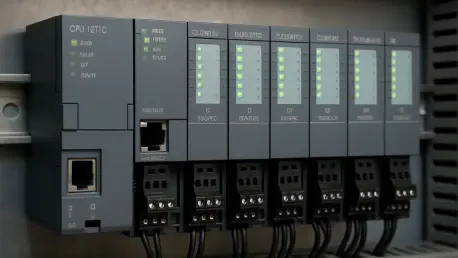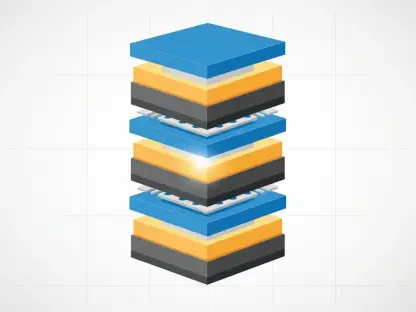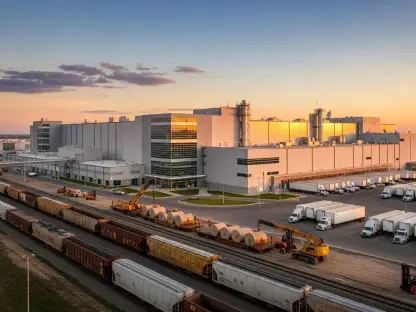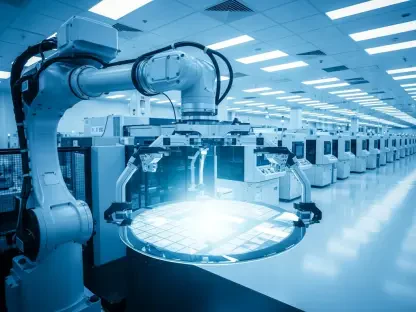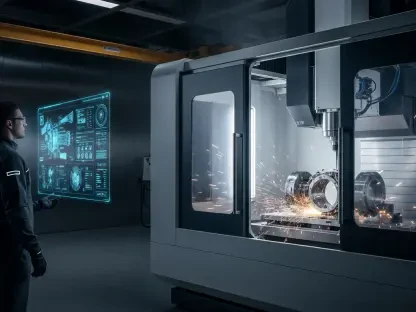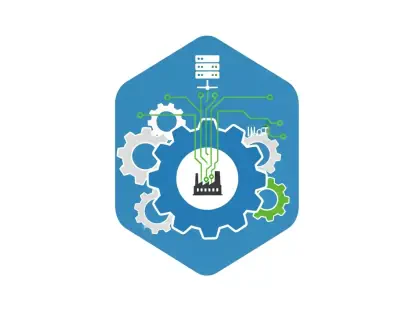The automation industry today stands at the cusp of a revolution, driven largely by advancements in micro and nano programmable logic controllers (PLCs). As industries increasingly turn to automation for efficiency, cost-effectiveness, and productivity, micro and nano PLCs are emerging as pivotal components of this transformation. Forecasts indicate a significant leap from a market valuation of USD 1.27 billion in 2024 to approximately USD 4.07 billion by 2034, marking a compound annual growth rate (CAGR) of 12.35% from 2025 to 2034. This surge can primarily be attributed to the burgeoning demand for compact, economical automation solutions, catalyzed by the widespread adoption of smart manufacturing and industrial Internet of Things (IoT) technologies.
Market Dynamics and Regional Growth Patterns
Micro and nano PLCs, characterized by their small form factor and limited I/O capacity, serve industries seeking space-efficient and cost-effective automation solutions. With micro PLCs offering an I/O range between 20 to 128 points and nano PLCs fewer than 20 I/O points, these devices address the pressing need of businesses to implement complex automation strategies within constraints of space and budget. On a global scale, the Asia-Pacific region leads the micro and nano PLC market, holding a significant 43% share as of 2024. This dominance is fueled by rapid industrialization, governmental promotion of industrial automation, and established manufacturing sectors in nations such as China. The momentum in this region is further buoyed by advancements in smart home technologies and wearable tech.
Latin America’s market is projected to experience the fastest growth from 2025 to 2034. The region’s increasing automation adoption in sectors like manufacturing and energy generation, backed by government initiatives and substantial technological investments, underpins this acceleration. North America remains vital due to its robust industrial infrastructure, Industry 4.0 adaptation, and substantial R&D investments. The region retains stability with a consistent demand for compact automation solutions, supporting enhancements in PLC capabilities. Europe is set to continue its promising trajectory, driven by its focus on industrial automation and electronics miniaturization. Government policies fostering automation and energy-efficient solutions are propelling the region forward. Meanwhile, the Middle East and Africa witness marked growth due to rapid industrialization, supportive government policies, and an increasing emphasis on smart technologies, especially in sectors like oil and gas.
Technological Advancements and Industry Trends
As industries across the globe strive to enhance efficiency, reduce production costs, and boost productivity, micro and nano PLCs have become indispensable. These compact controllers provide economic and scalable solutions, ideal for confined spaces where traditional PLC systems might not be feasible. The global shift towards Industry 4.0, characterized by digital technology integration and data analytics, further fuels the demand for these PLCs. They perfectly align with Industry 4.0’s emphasis on smart manufacturing and data-driven processes.
In terms of programming and scalability, micro PLCs are gaining traction for their cost-effectiveness and ease of use. Sectors adopting automation recognize these PLCs for streamlining operations. Continued advancements in PLC technology, such as improved programming interfaces and connectivity options, are propelling the uptake of these sophisticated solutions. Additionally, these systems’ capability to handle moderate I/O points without high complexity expands their applicability across industries like machine automation, HVAC, food processing, and more. The nano PLCs, with their smaller size, are particularly favorable for edge computing integration, facilitating efficient local processing and swift response times.
Expanding Application Areas and Communication Protocols
The micro and nano PLCs market encompasses wide-ranging applications, including machine control, packaging automation, industrial robotics, and building automation. Notably, these controllers show promise in advanced fields like smart agriculture and irrigation systems. By aligning with sustainable and precise farming practices, they offer potential for resource optimization in the agricultural sector. End-user sectors such as small and mid-sized enterprises (SMEs) predominantly drive market demand, given their need for affordable automation solutions. These PLCs cater to SMEs’ space and financial limitations, providing scalability for future expansion.
Communication protocols such as Modbus and Ethernet/IP currently dominate the market due to their adaptability and performance in large network management. However, there is growing traction for IoT-enabled protocols, crucial for seamless data exchange in modern industrial environments. This trend underscores the demand for adapting micro and nano PLCs to support expanding IoT and industrial frameworks. Emerging and established firms are pivotal in driving market progress, introducing innovations like advanced remote diagnostic solutions and compact PLC models featuring enhanced capabilities.
Opportunities and Challenges in the Market
Today, the automation industry is on the brink of a major transformation, propelled by the notable progress in micro and nano programmable logic controllers (PLCs). As businesses increasingly aim for effective, cost-efficient, and productive operations through automation, micro and nano PLCs are becoming central to this shift. Projections show the market size is expected to soar from USD 1.27 billion in 2024 to an estimated USD 4.07 billion by 2034, reflecting a compound annual growth rate (CAGR) of 12.35% from 2025 to 2034. This dramatic growth is largely driven by the rising need for compact and affordable automation solutions. Such a trend is supported by the growing embrace of smart manufacturing practices and industrial Internet of Things (IoT) technologies, which demand more efficient and flexible automation systems.
Micro and nano PLCs are particularly appealing due to their ability to manage complex processes while occupying minimal space, thus making them ideal for the evolving needs of modern industries. They offer the versatility and scalability crucial for industries keen on optimizing productivity and lowering costs. As industries increasingly adopt connected devices and smart systems, these controllers are likely to play an even more pivotal role, enabling the seamless integration of advanced technologies into traditional manufacturing processes. This shift not only enhances operational efficiency but also aligns with the global trend of digital transformation across various sectors.
